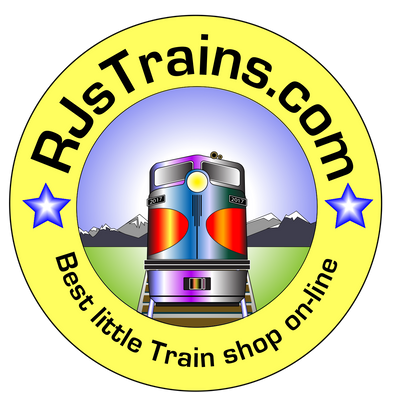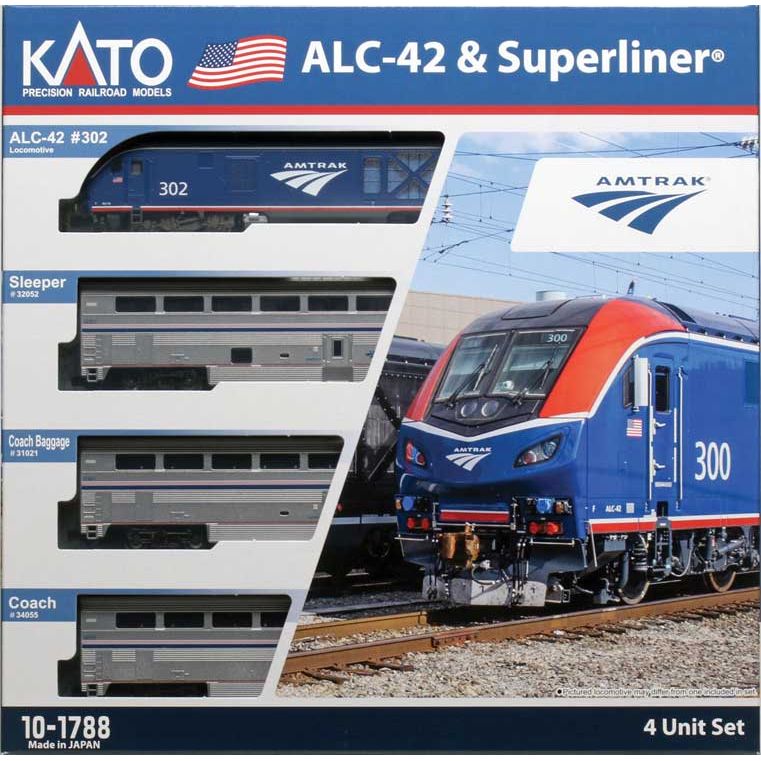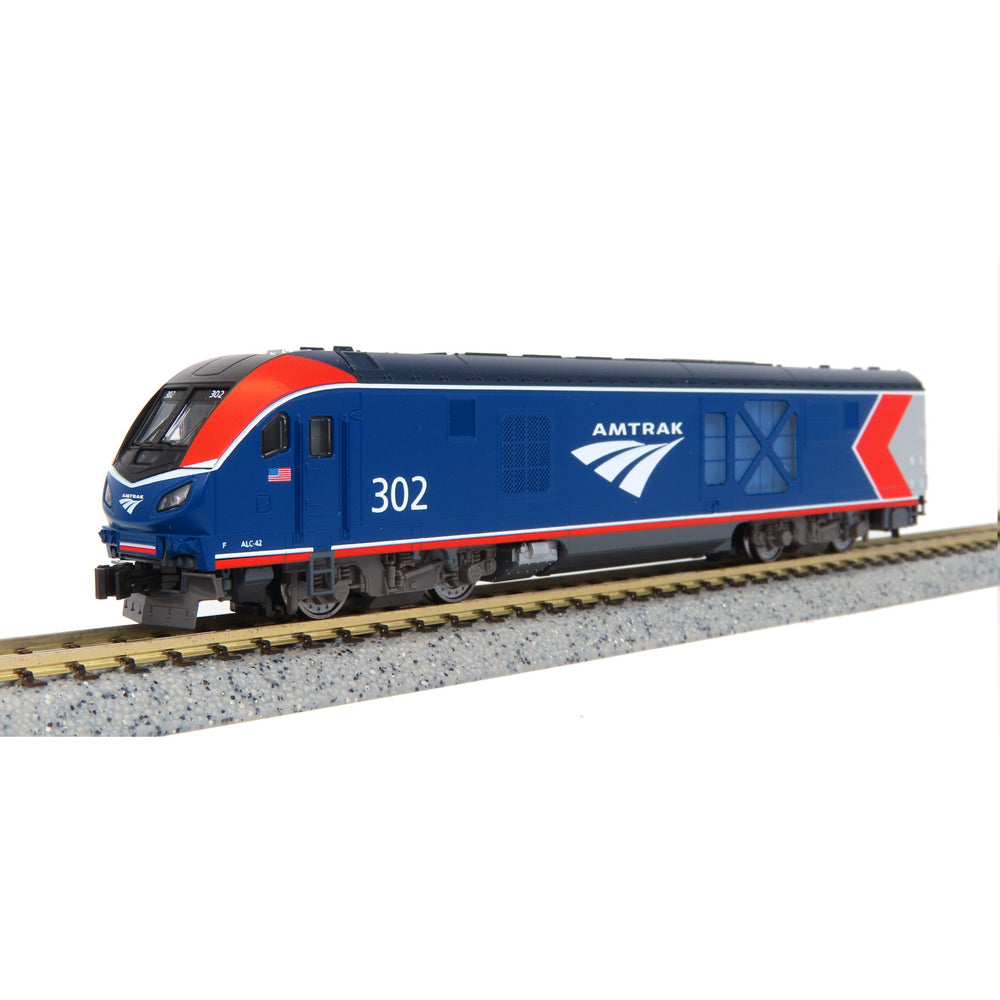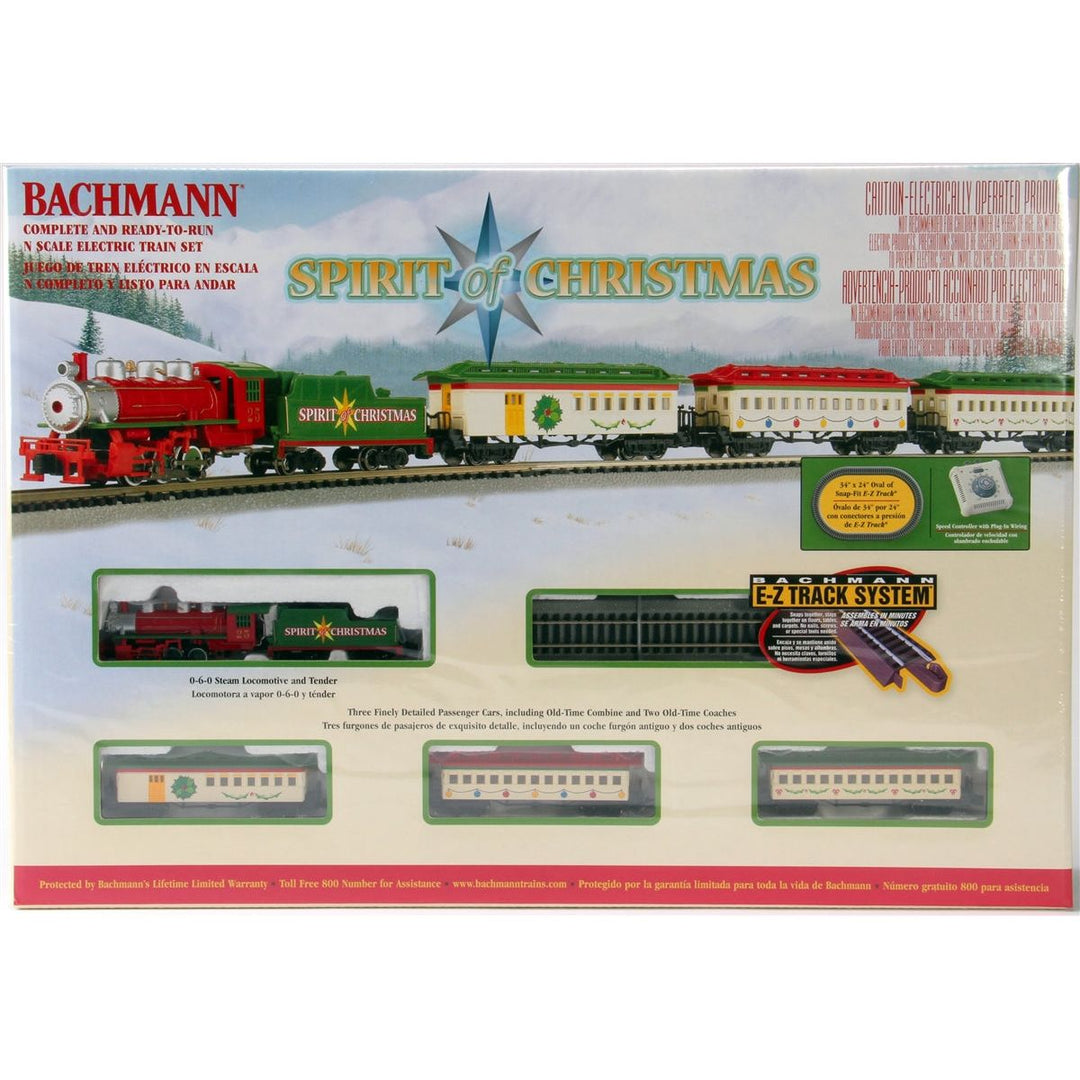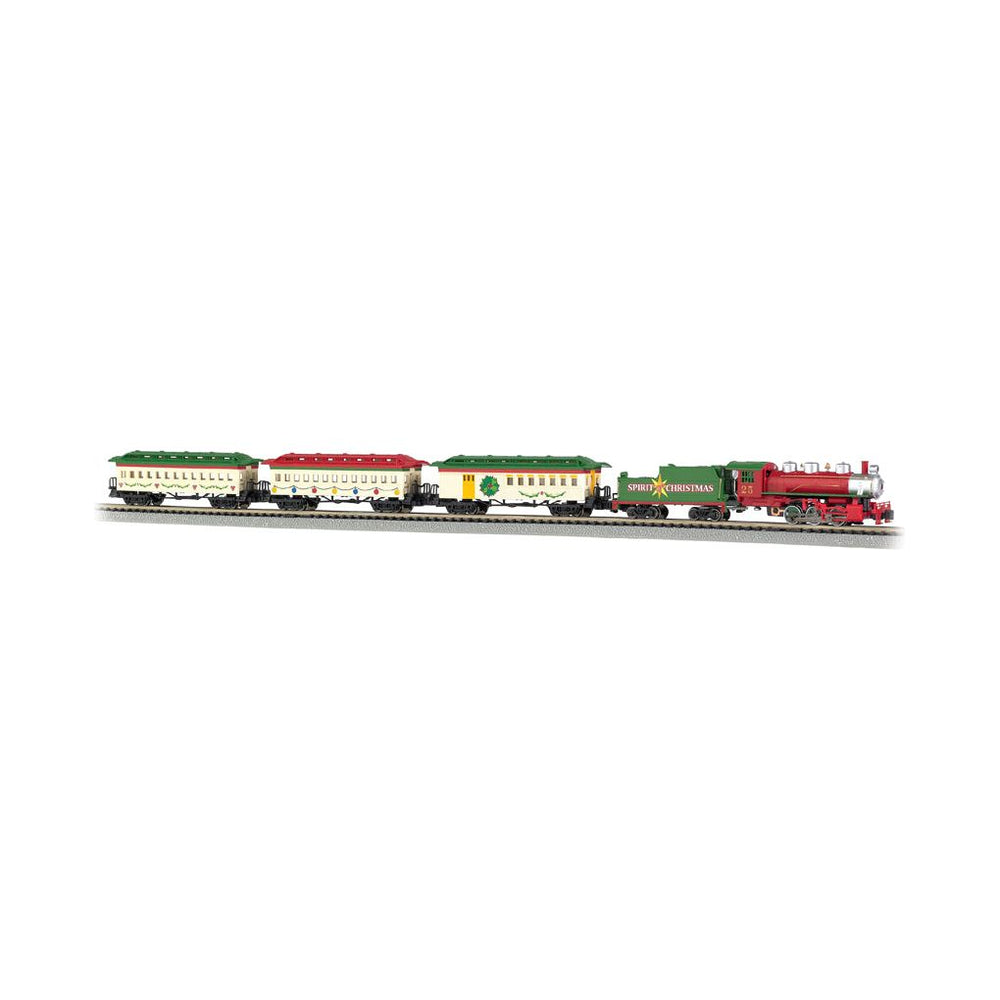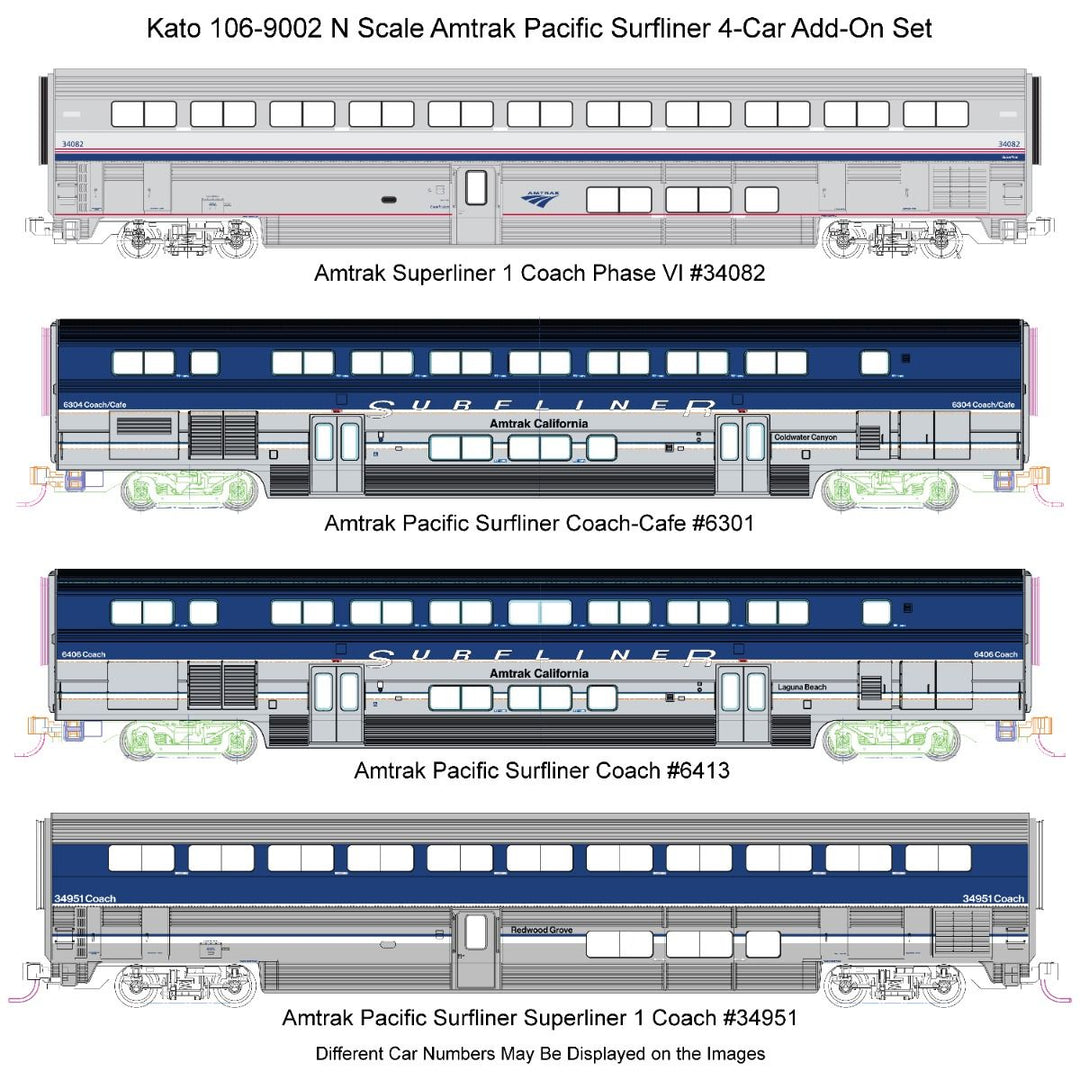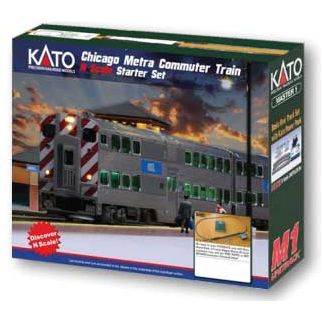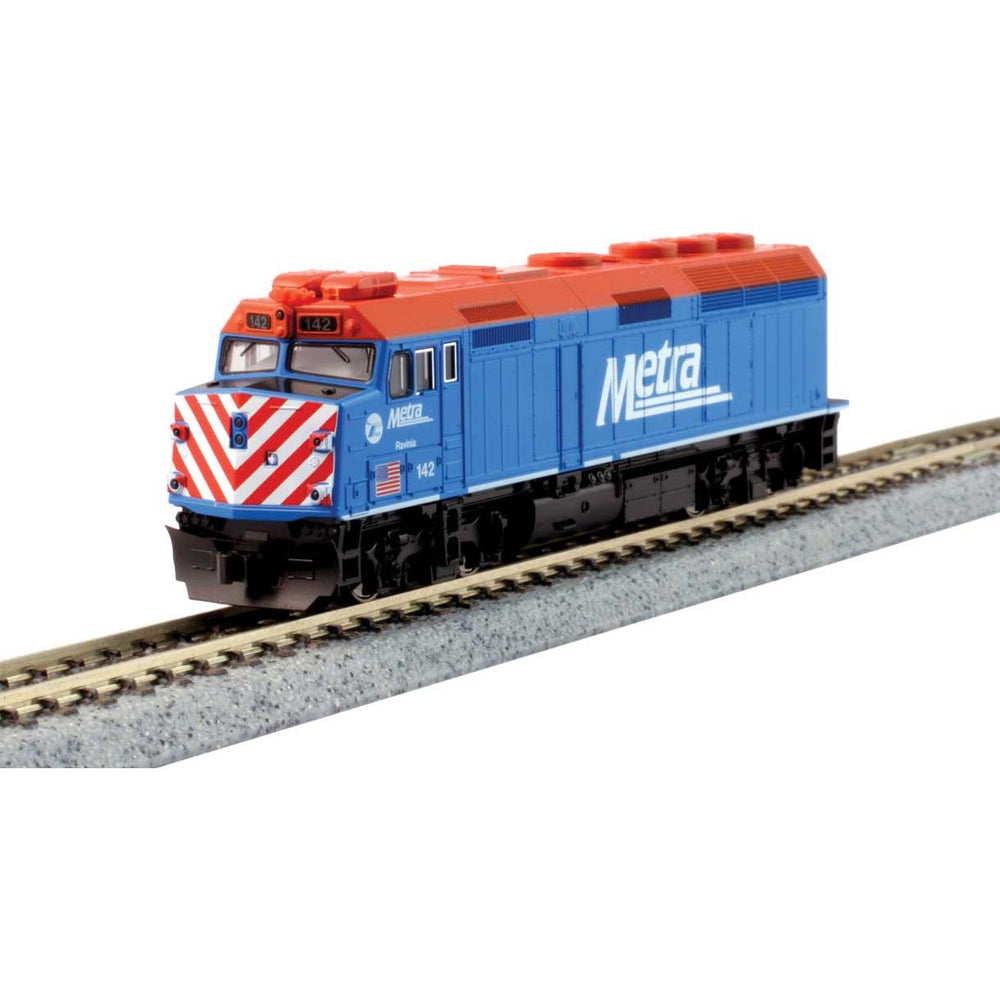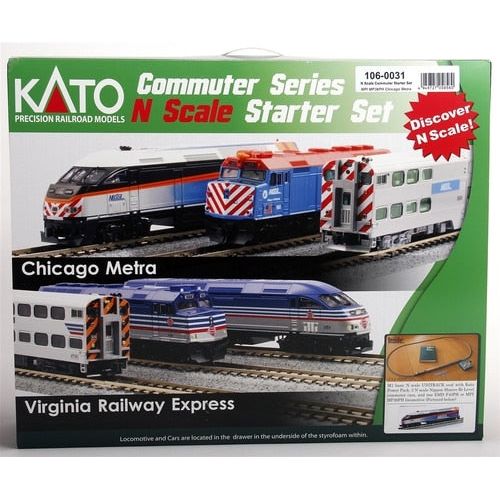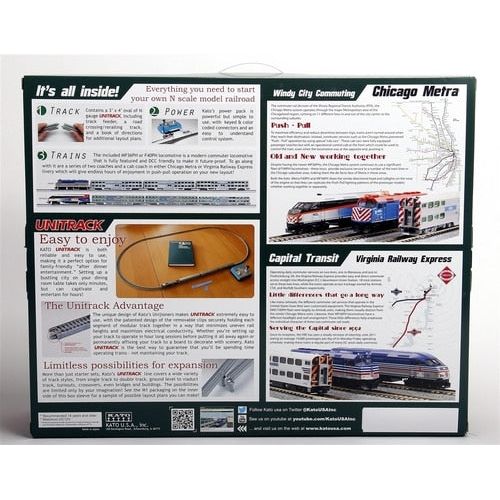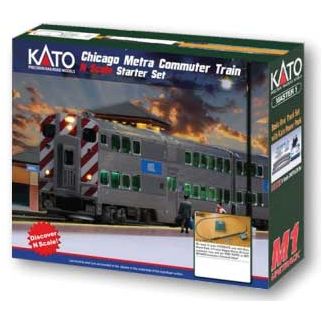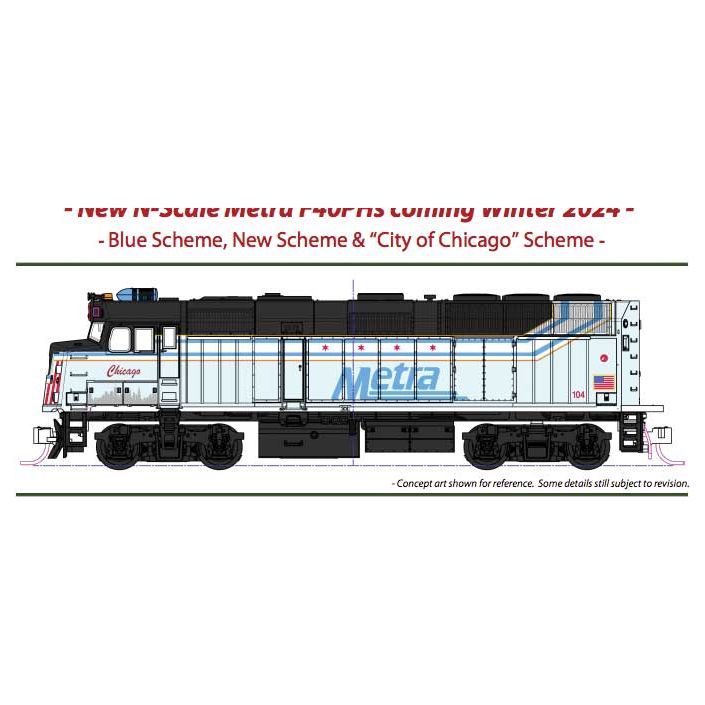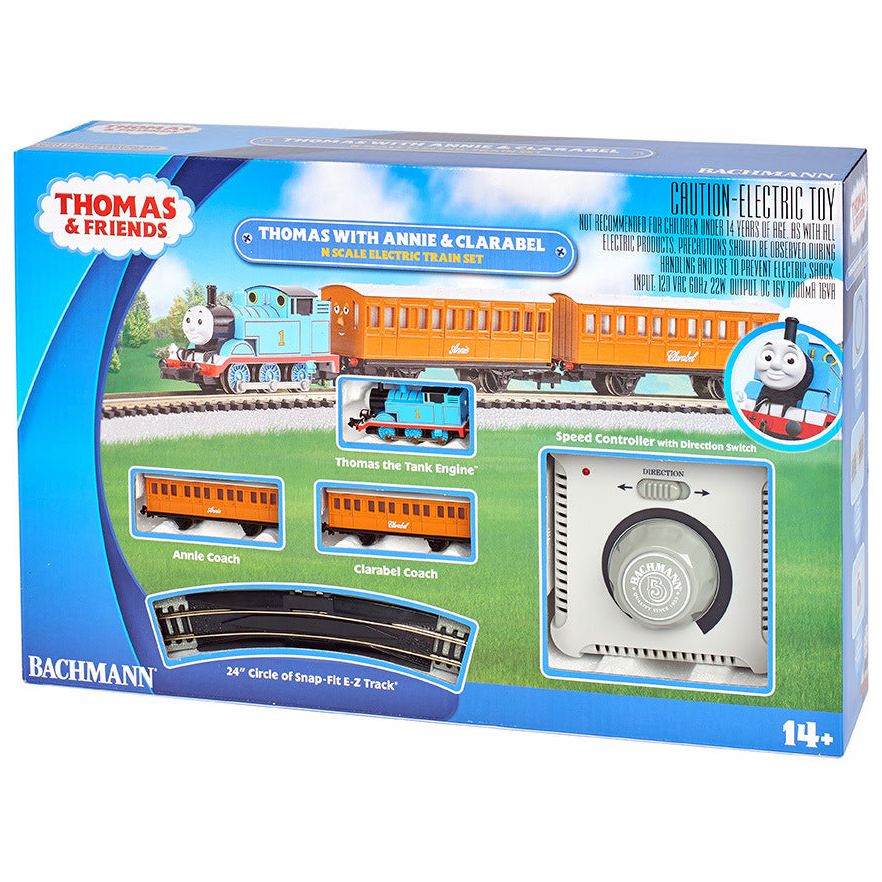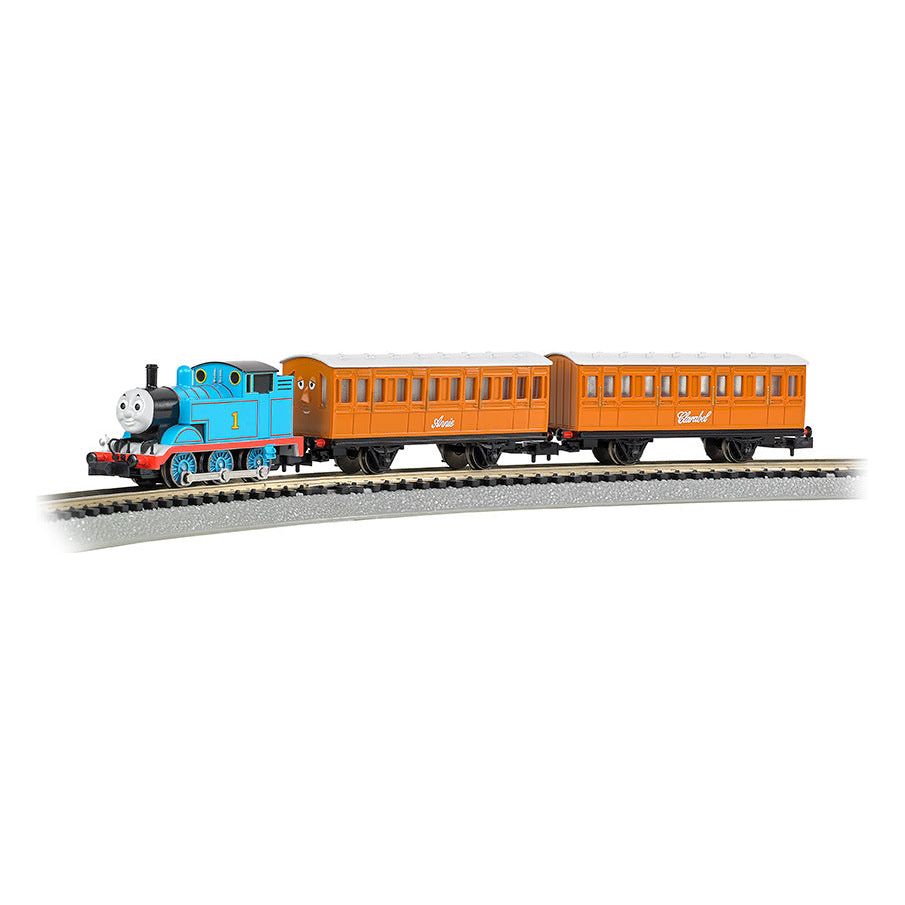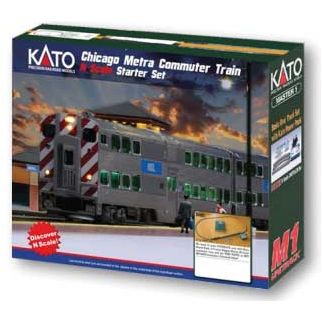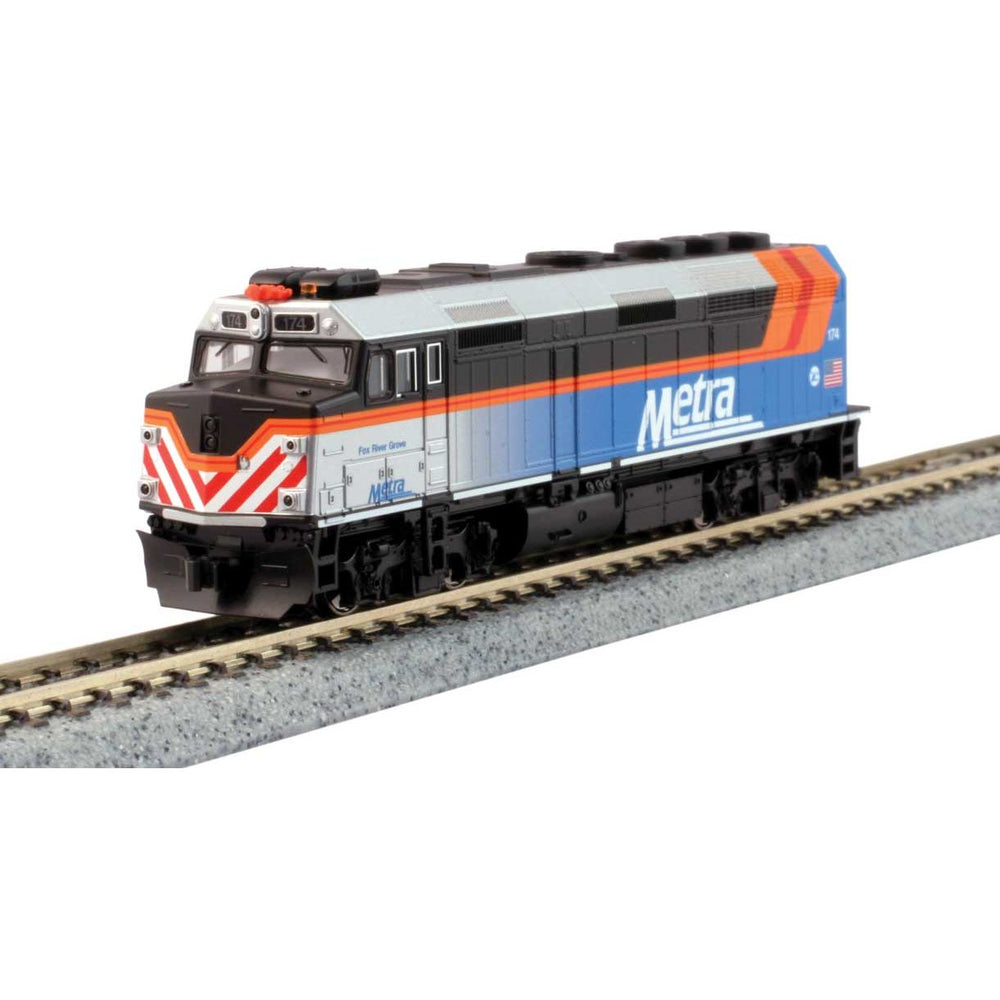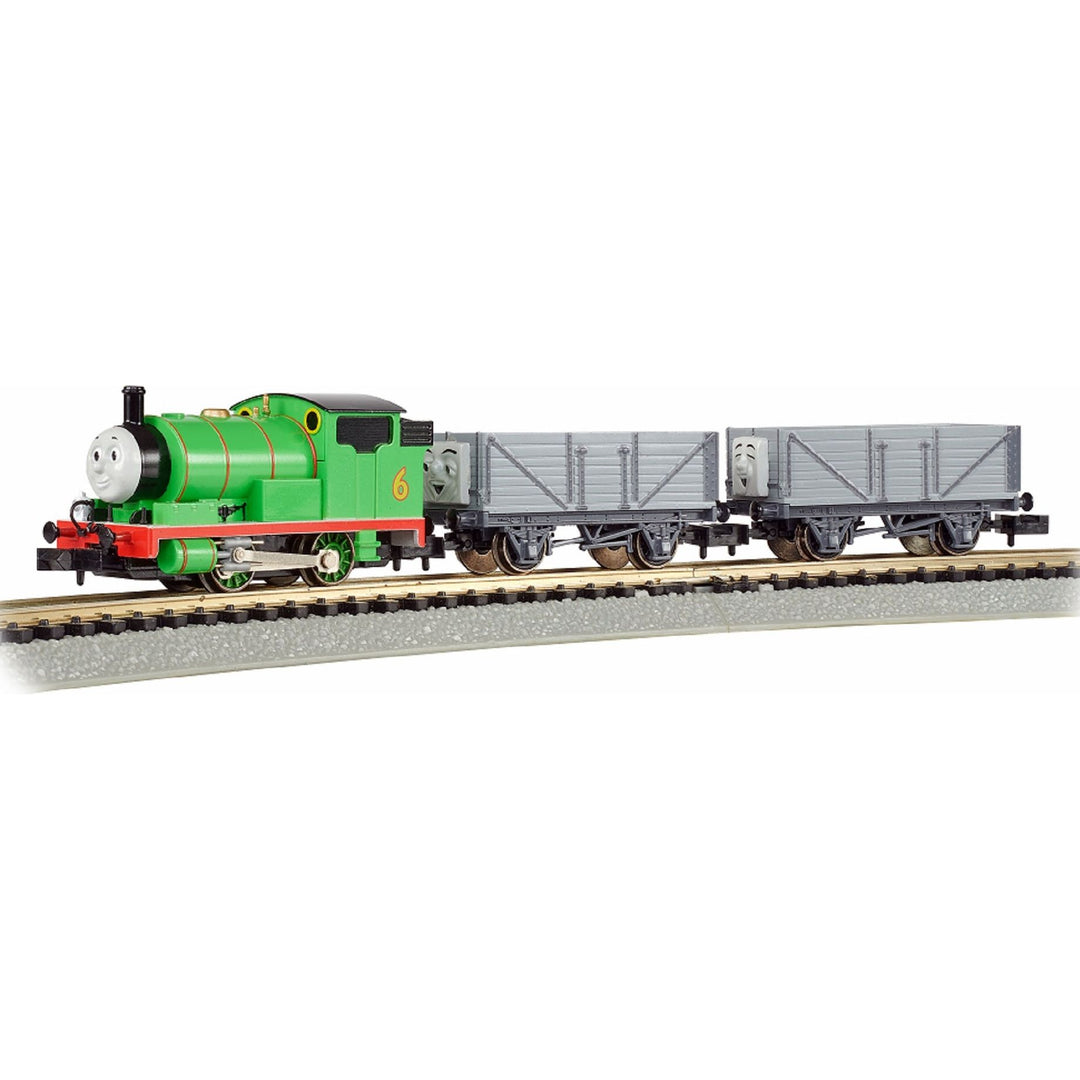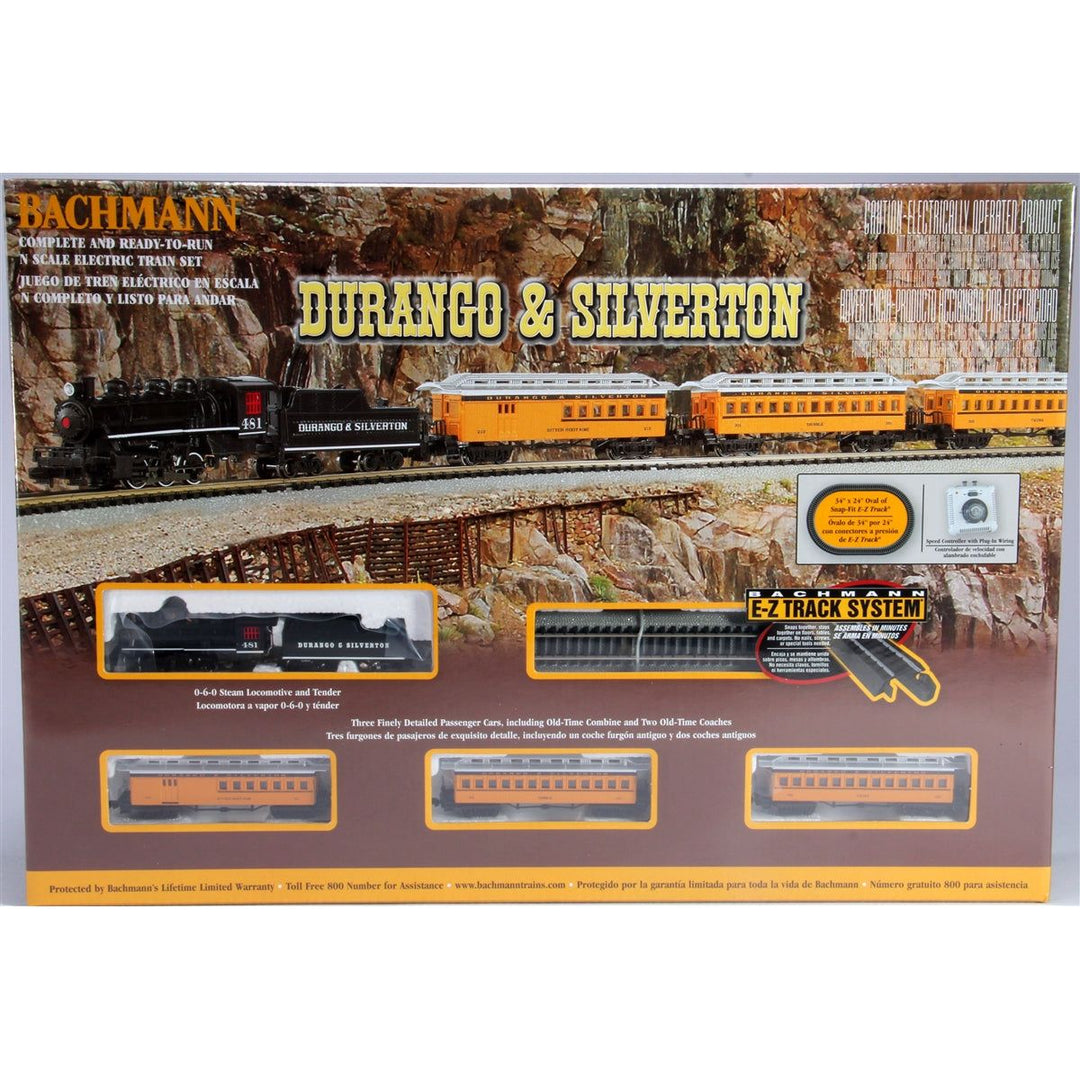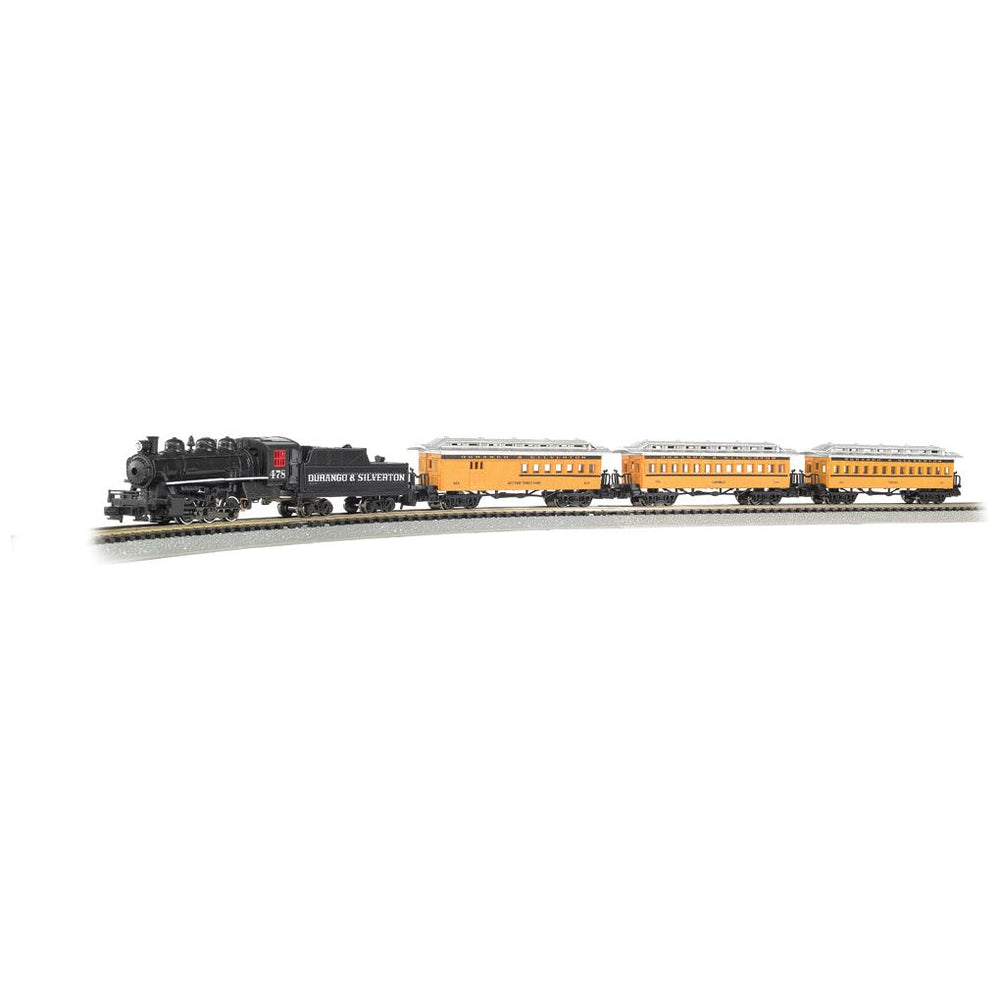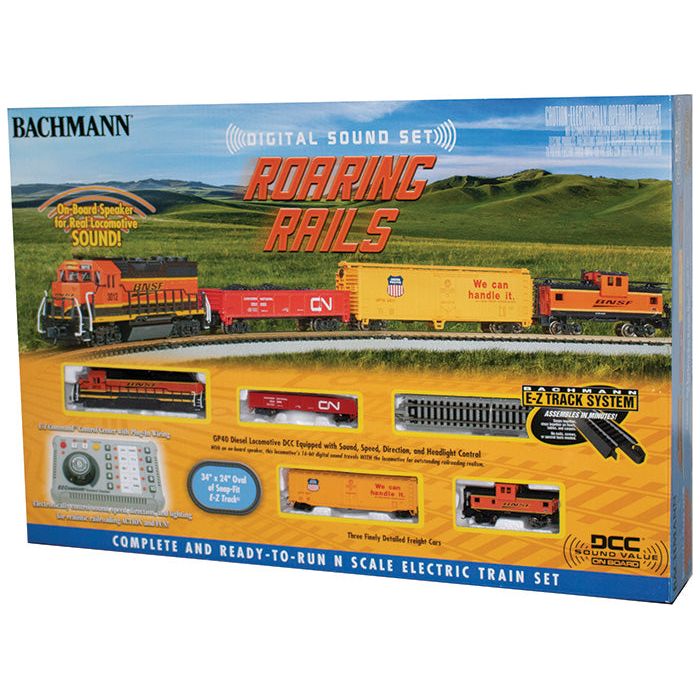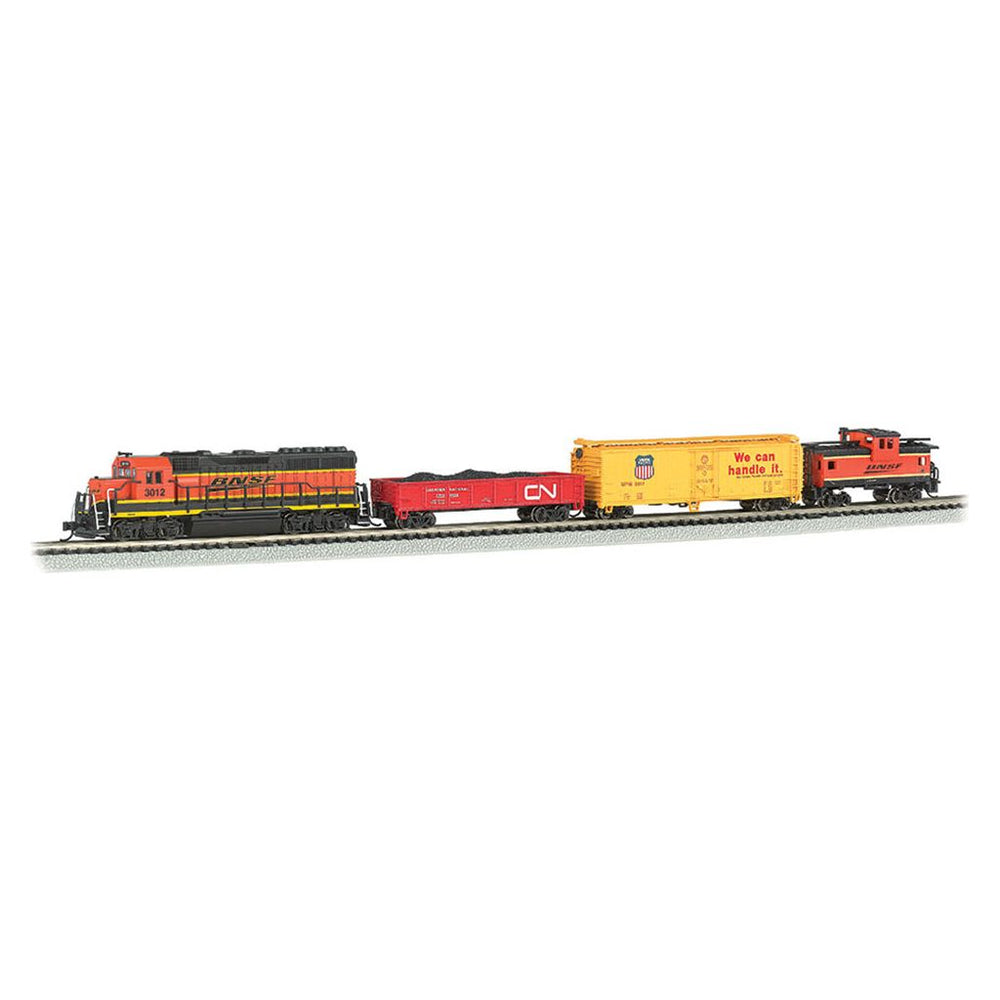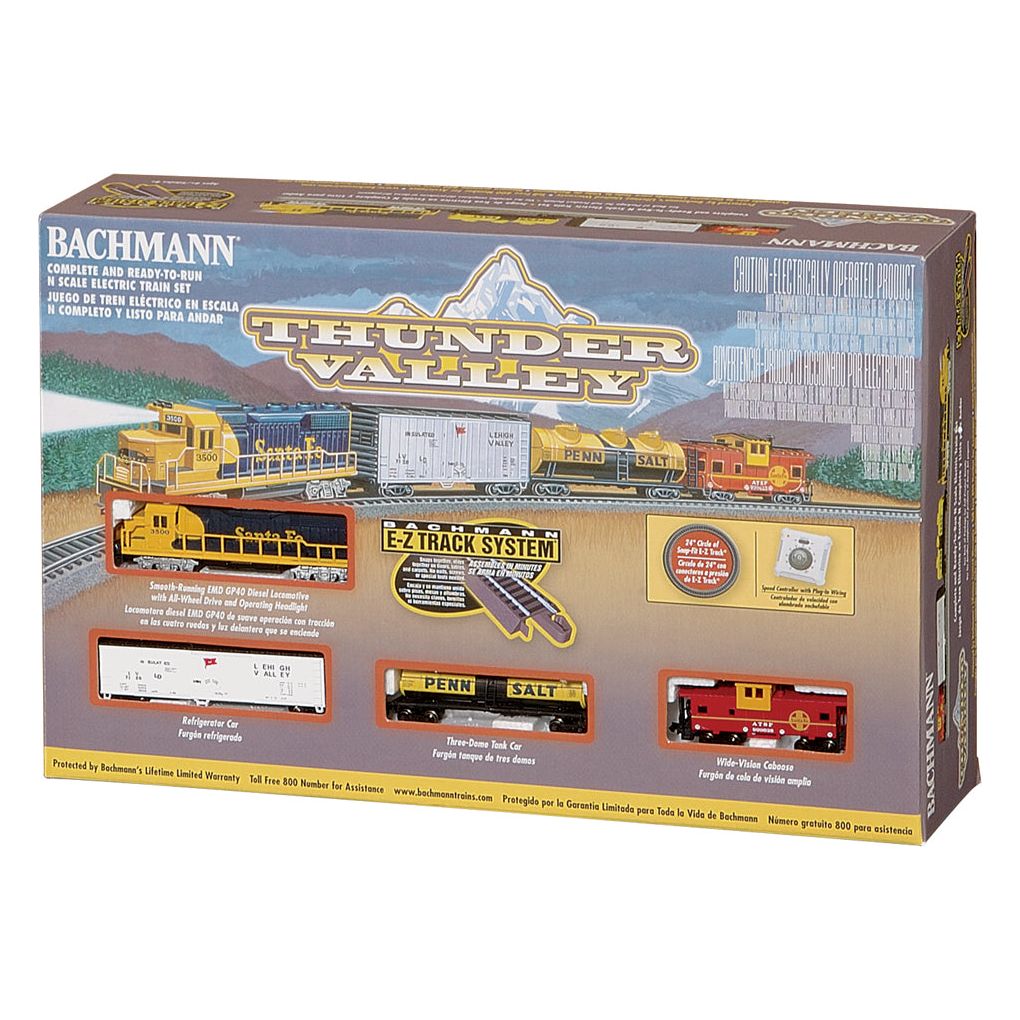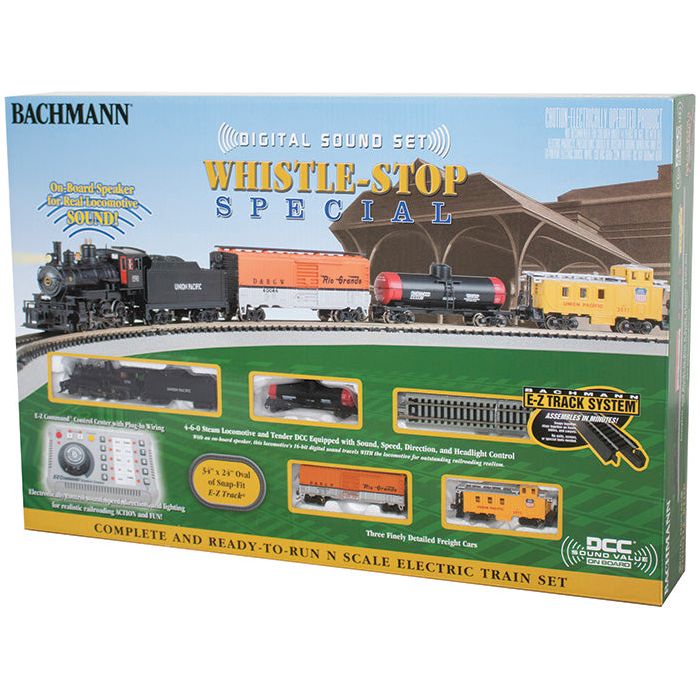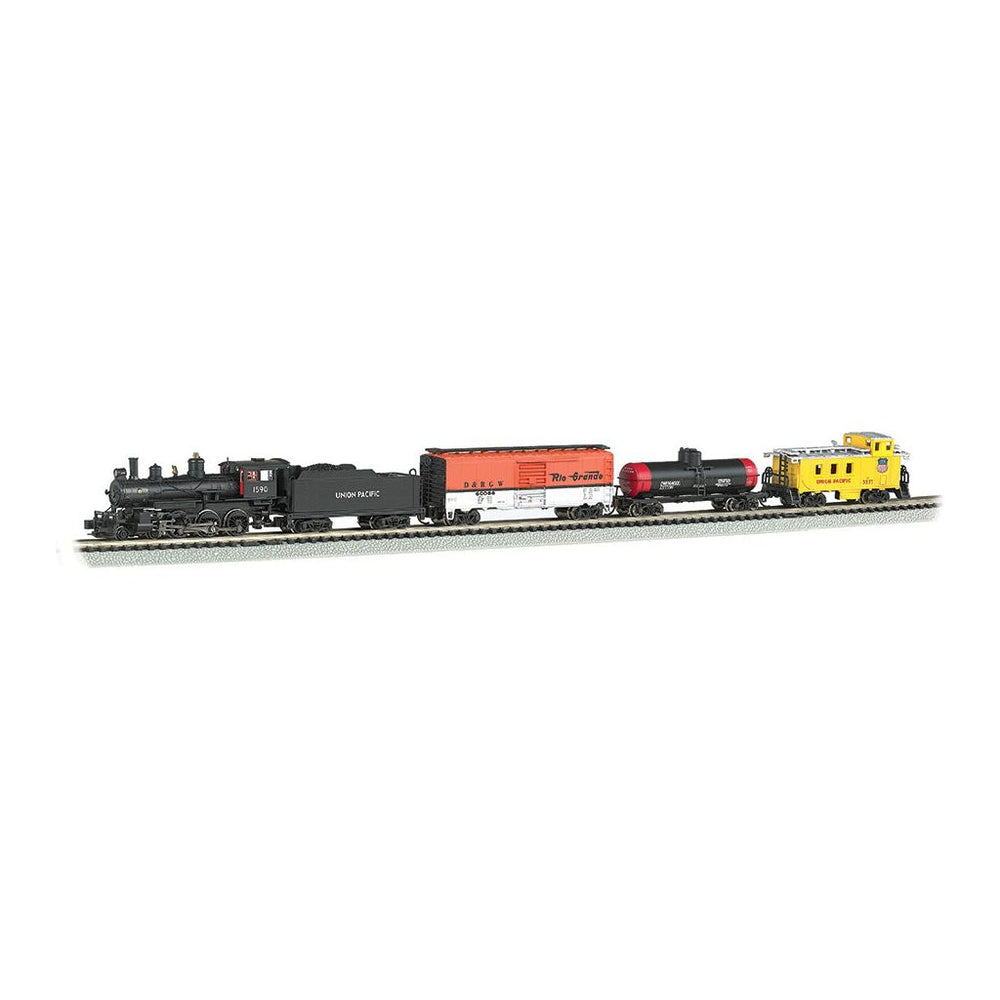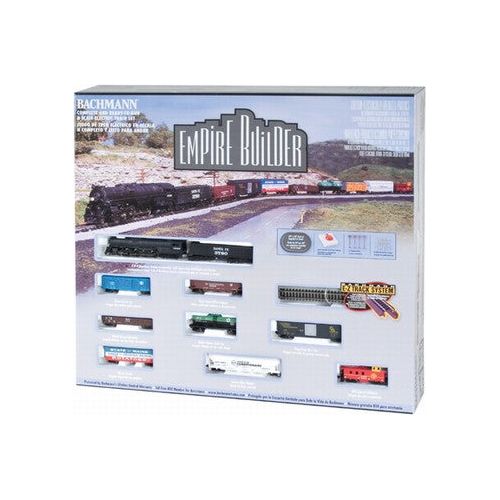N Scale Train Set
N scale is a popular model railway scale.[1] Depending upon the manufacturer (or country), the scale ranges from 1:148 to 1:160. Effectively the scale is 1:159, 9 mm to 1,435 mm (4 ft 8+1⁄2 in), which is the width of standard gauge railway. However the scale may vary to simulate wide or narrow gauge rail. In all cases, the gauge (the distance between the rails) is 9 mm or 0.354 in. The term N gaugerefers to the track dimensions, but in the United Kingdom in particular British N gauge refers to a 1:148 scale with 1:160 (9 mmor 0.354 in) track gauge modelling. The terms N scale and N gauge are often inaccurately used interchangeably, as scale is defined as ratio or proportion of the model, and gauge only as a distance between rails. The scale 1:148 defines the rail-to-rail gauge equal to 9 mm exactly (at the cost of scale exactness), so when calculating the rail or track use 1:160 and for engines and car wheel base use 1:148.
All rails are spaced 9 mm apart but the height can differ. Rail height (in thousandths of an inch) is expressed as a "code": thus, Code 55 rails are 0.055 inches (1.4 mm) high while Code 80 rails have a height of 0.080 inches (2.0 mm).[2][3] Common real railroad rails are at least 6 inches (150 mm) tall and can be taller on some roads, so at true scale the rails would be about 0.040 inches (1.0 mm) high.[2] Many older N-scale models may not run well on Code 55 track as their flanges are often unrealistically large, causing the wheels to bounce along the ties instead of ride along the railhead. Wheelsets with these large flanges are colloquially known as 'pizza cutters' due to a resemblance to the kitchen utensil.[note 1]
An advantage of N scale is that it allows hobbyists to build layouts that take up less space than HO scale, or put longer track runs into the same amount of space, because the models are smaller (by nearly a half) than they are in HO scale (1:87).[5] While N scale is quite small, it is not the smallest commercially available scale. Z scale is smaller yet at 1:220 and T scale is 1:450 or 1:480. N scale is generally considered compatible with 1:144 scale for miniature wargaming
